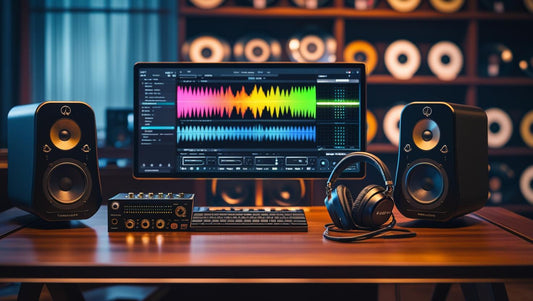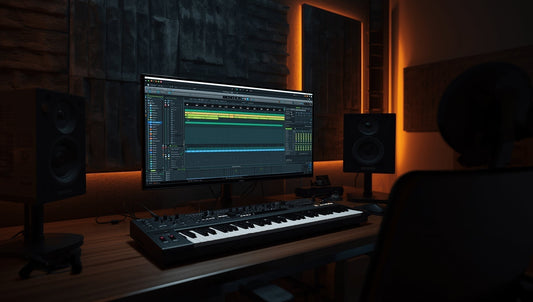What Is the Difference Between Hip-Hop and Rap Music?

People toss around “hip-hop” and “rap” like they’re the same, but there’s a difference—and it runs deep. One is a full cultural movement. The other is an art form that came out of that movement. Hip-hop is alive. Rap is performed. It’s not just about beats or rhymes—it’s how you rock what you got. From the way you lace your sneakers to the way you flip pain into poetry, it’s a whole way of life.
What Is Hip-Hop?
Hip-hop is culture in motion. It shows up in how you talk, how you walk, how you dress, and how you create. It’s expression without permission. From flipping thrift store fits into fresh statements to tagging your name across the city to moving the crowd in a cypher—it's all about individuality and raw creativity. Hip-hop wasn’t built in boardrooms. It was built in communities—born from soul, jazz, funk, disco, and rock, then flipped through turntables, breakbeats, and lived experience. It’s innovation through limitation.
Hip-Hop’s Social and Political Impact: Galvanizing the Disenfranchised
Hip-hop galvanized the disenfranchised. It wasn’t just entertainment—it was resistance.
It gave people in forgotten neighborhoods a way to be heard. When the system turned its back, hip-hop faced the crowd. Artists like KRS-One, Public Enemy, and N.W.A. didn’t just
rhyme—they reported. They challenged injustice, brought light to real issues, and gave communities the tools to unify and fight back. It was protest wrapped in poetry.
What Is Rap Music?
Rap is the lyrical side of hip-hop—the voice. It’s the part where the MC steps to the mic and speaks truth, style, or story over a beat. It evolved as the main delivery system for the culture’s message. But in time, it got isolated, packaged, and marketed as its own product.
Rap became the soundtrack the industry could sell—even when it stripped away the rest of the culture it came from.

History and Development of Rap
Rap started as party energy—block parties, parks, and school gyms. Then it evolved.
Rakim brought complexity, Pac brought pain, Nas brought poetry, and so on. Over time, rap grew into a genre of its own, crossing into pop, trap, drill, alternative, and beyond. But it never stopped being rooted in rhymed storytelling over beats.
Key Differences Between Hip-Hop and Rap
Hip-Hop as a Cultural Movement vs. Rap as a Musical Genre
Hip-hop is a lifestyle. It touches fashion, dance, art, and language. Rap is a musical art form within that lifestyle—it’s one piece of the puzzle.
Hip-Hop's Influence on Society vs. Rap’s Focus on Lyrics
Hip-hop moves people. It builds movements. Rap focuses on bars, flows, and vocal
delivery—it’s more performance-based.
The Role of Dance and Graffiti in Hip-Hop vs. Rap’s Focus on the Vocal Performance
Hip-hop includes the whole visual and physical experience—breaking, graffiti, and fashion. Rap zooms in on what’s being said and how it’s said.
Hip-Hop's Connection to Various Art Forms vs. Rap’s Musical Production
Hip-hop links DJing, dance, art, film, education, and fashion. Rap is more about beat selection, cadence, and lyrical execution.
Musical Elements: Hip-Hop vs. Rap
Hip-Hop Production
Sampling vinyl, chopping breaks, analog warmth, boom-bap grit—hip-hop production leans into raw soul. It's more collage than composition. It’s about vibe, not polish.
Rap Music Production
Rap production can be anything—808-heavy trap, melodic drill, pop-rap, or orchestral beats. I’s wide open, often chasing whatever’s hot in the moment.
Origins of Hip-Hop and Rap
Roots in the Bronx and the Birth of Hip-Hop
It all started in the Bronx—block parties, DJs with crates, MCs rocking the mic.
Kool Herc, Afrika Bambaataa, and Grandmaster Flash laid the foundation for the entire culture.
Rap’s Emergence from Hip-Hop
Rap grew out of those parties and became the voice of the culture.
But once the industry saw the profit, it started treating rap like it was the whole package.
Hip-Hop and Rap's Evolution
The Growth of Hip-Hop
From New York to Tokyo, hip-hop became a global language.
It influenced movies, clothing brands, politics, education, and more.
Rap’s Rise in Popular Music
Rap took over the charts. From the underground to the mainstream, it became the dominant sound of a generation. But not all rap today stays connected to its hip-hop roots.
FAQs
What is the main difference between hip-hop and rap music?
Hip-hop is a full culture. Rap is a musical form that lives inside that culture.
Is rap music a part of hip-hop?
Yes—but not all rap stays true to the culture of hip-hop.
How did hip-hop music originate?
It started in the Bronx, born from DJ culture and breakbeats, with MCs hyping up the crowd and expressing what the people lived.
Why is rap more focused on lyrics compared to hip-hop?
Rap is the lyrical voice—so it’s naturally more focused on bars. Hip-hop includes way more
than just lyrics.
Can someone be a part of hip-hop without rapping?
Absolutely. DJs, dancers, graffiti writers, stylists, and beatmakers—they’re all part of hip-hop.
How has rap music evolved from its roots in hip-hop?
Rap has expanded into multiple genres and styles, some of which stay rooted in the
culture—others that are more about trend than truth.
Conclusion
Hip-hop is a culture—a way of life that grew out of struggle, soul, and self-expression. Rap is the sound that came from it, but also the part most easily separated and sold. To know the difference is to respect the roots. Hip-hop is how we live. Rap is how we tell it.
No comments








0 comments